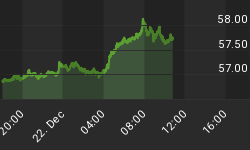Amidst record-high temperatures and a very anti-climactic 4th of July, power outages have left millions without air-conditioning and even water in rural areas where households rely on electric pumps. At least 52 people have died from heat and three million people are still without power.
No it's not Yemen, where power outages in the capital Sana'a have sparked a new round of protests. It's the United States of America, where corruption converges with a moribund electricity distribution system to produce increasingly frequent blackouts across the Midwest and East Coast.
A thunderstorm that struck the East Coast early last week left millions without electricity and power companies took days to restore power to about half of their customers. Four days after the storm, power was restored to 67% in the Northern Virginia suburbs and 61% in Baltimore, but Montgomery County, Maryland and parts of Washington, D.C. only managed to restore 43%, leaving over a million without electricity as temperatures soared above 100 degrees.
In the Midwest, there was less chance of blaming storms. In Michigan, for instance, an increasingly woebegone state, power outages are frequent. In counties near the capital, Lansing, hundreds of homes were without power for the 4th of July. Power was restored that evening, but lost again the following day. And this has been going on for some time.
Everyone would like to know why. The answer is simple, and three-fold: An outdated electricity distribution system, corruption and mismanagement.
Americans are now being told that keeping utility bills down means keeping maintenance of the country's dismal electricity distribution system to a bare minimum. According to the ![]() American Society of Civil Engineers, the entire system could collapse by 2020 without an immediate investment of $673 billion. Furthermore, experts say that brownouts and blackouts will end up costing more in the end than re-hauling the entire system.
American Society of Civil Engineers, the entire system could collapse by 2020 without an immediate investment of $673 billion. Furthermore, experts say that brownouts and blackouts will end up costing more in the end than re-hauling the entire system.
The system cannot handle increasing demand, especially when the entire country is turning on the AC. Last week's brownouts and blackouts will become status quo.
In fact, as NPR quipped, "the basic principles of power delivery haven't changed much since Thomas Edison flipped on the first commercial power grid in lower Manhattan on Sept. 4, 1882."
According to the ASCE's engineers, more than 60% of the country's electricity transmission lines and power transformers are at least 25 years old, while 60% of the circuit breakers are more than three decades old.
This is to prepare Americans for higher utility bills in the future. But it also ignores the corruption and mismanagement that has allowed privately owned power companies to profit from bare-minimum maintenance and deregulation. There is no investment in infrastructure, no guarantees of service, and continually worsening standards of safety and maintenance.
It is an outmoded system of distribution compared to Europe's for instance, where power lines are buried underground. While this makes them more difficult to reach and harder to fix, they are also much less at the mercy of Mother Nature.
With that in mind, all eyes are on the Potomac Electric Power Company (Pepco), the utility company that provides power to Montgomery County, Maryland and parts of Washington, D.C. and which was rated last year by Business Insider as "the most hated company in America". Certainly, these past days and weeks have done nothing to help that rating.
According to OurDC, from 2008 to 2010, Pepco's profit earnings were $882 million, yet they paid no federal or state income taxes and instead received $817 million in tax refunds. At the same time, local authorities allowed Pepco to cut back on maintenance to save money.
There was an attempt last year to take Pepco to task, but the result was a very public slap on the wrist. An investigating commission found that Pepco was not conducting inspections of its sub-transmission and distribution lines even after storms. It also found that the company was about four years behind on the tree-trimming necessary to ensure that the local greenery is not interfering with power lines. Pepco was made to promise a 3% increase in reliability year-on-year (beginning only next year), and it was fined a one-time fee of $1 million for failing to fix problems that led to frequent outages.
Of course, no major changes were enforced and Pepco paid lip service to the situation by submitting a five-year plan for improvements that would cost around $300 million and be passed directly on to the consumer.
Burying power lines would cost between $5 and $15 million per mile. Pepco likes to point out that this would mean an increase in consumer power bills by about $107 per month. The consumer would no doubt like to point out that the power companies' greed and mismanagement, for which the consumer has long been footing the bill, should be rolled in to cover a large chunk of this cost.
As always, disunited, the consumer doesn't have a chance. The consumer will pay for power company greed and neglect unless there is some form Arab-Spring (American Summer) manifestation.
By. Jen Alic of Oilprice.com















